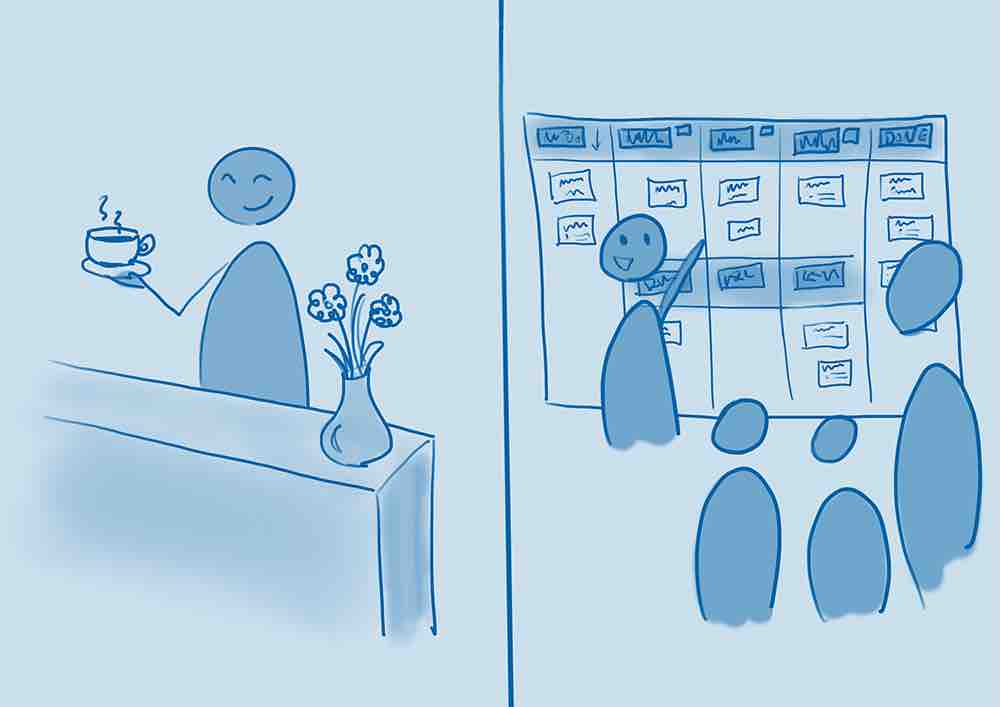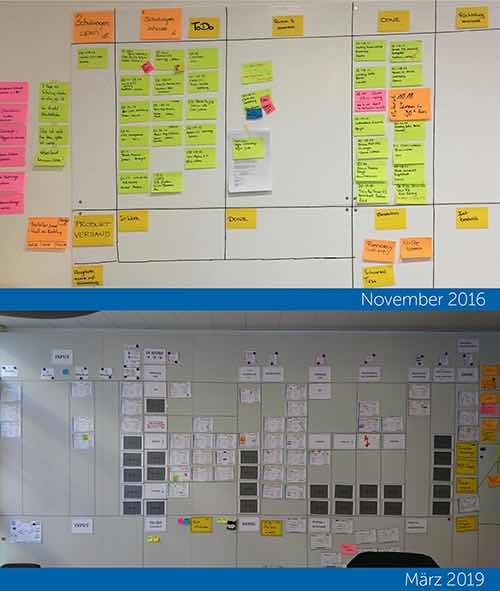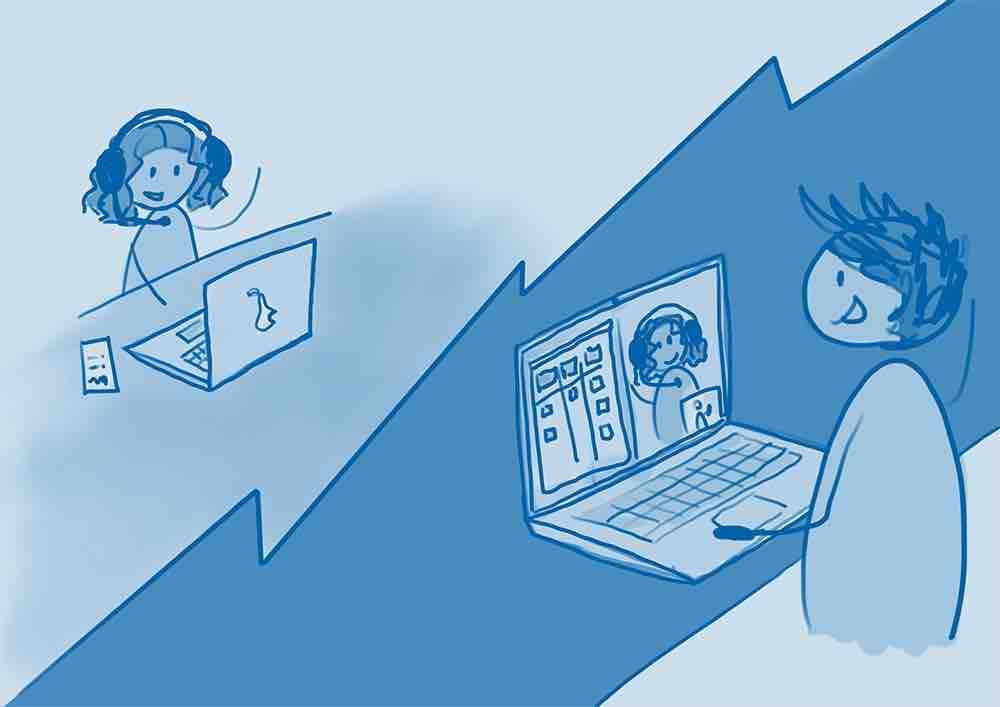Pretty much everyone who attends a training course at wibas encounters our service team: be it at the coffee bar, in the training room or in front of the team's own wall-sized Kanban board. We have explained what the service team does and how it works in "Kanban - A field report" tells. Today, a good three years later, we want to take another look at the team and its development.
The Service Team is a self-organized Kanban team consisting of students from various disciplines. The services provided by this team are primarily training support, as well as organizational preparation, logistics of training materials/documents and product shipping. The team currently consists of eight team members and an Agility Master. Joint events such as dailies and weekly retrospectives are part of the joint agenda.
Everyone starts small
There were already working students at wibas before the service team was founded. They supported other employees with their tasks or provided our training participants with coffee. The idea of a self-organized student team that would be actively involved in the value chain of our training courses was born and implemented in autumn 2016 with five students. As we at wibas believe in the effectiveness and efficiency of self-managed teams, we thought it was only logical to do the same for our service team.

Of course, not everything went smoothly from the outset. In order for such a newly founded, self-organized team to grow and flourish, it needs an environment that offers support and backing. Other employees at wibas always have an open ear for questions, no matter how trivial they may be. On the other hand, each individual in the service team first had to understand what it actually means to work in a self-organized way, to "pull" work, to take responsibility from the start of the process to the end, etc.
In order to support the team during the discovery phase and put it on the path to becoming a fully-fledged, self-organized team, the team was given its own Agility Master. She moderated and established the weekly Kaizen meetings (Kaizen = continuous improvement) and helped the team to bring structure to the regular meetings. The kaizens are important for synchronizing, learning from mistakes and implementing new ideas. As they are students, the working hours have always been very spread out, which makes this joint meeting all the more important. The team still holds weekly kaizens today.
And how did it go with the Kanban board?
In line with the Kanban principle "Start where you are at the moment", the team initially kept a simple to-do board with tasks. This board developed steadily through several improvement loops and workshops until it became a fully-fledged Kanban board. There is a lot of experimentation with the board: Regularly adapting it to the needs of the team, adding new elements, rebuilding structures is still happening today, as the process is never finished. Not only the board itself, but also the handling and work with it has developed over time from a push system to a pull system.

The team settled in and took on more tasks, services and responsibilities. After a few months, capacity bottlenecks became apparent and the team realized that it needed a new member. Together with the HR manager, a new team member was sought and the team grew. Today, the team has reached the point where it is able to carry out the search and application process for new members independently - which is not a matter of course for student teams.
Back to the here and now
Today, the service team is an integral and important part of wibas, playing a key role in the organization of our training courses, actively involved in the design of processes and launching experiments to improve things.
Due to the coronavirus restrictions, the service team also had to learn to organize its work remotely. The team is paying close attention to continuing to work together on tasks. Thanks to the team's adaptability, regular kaizens and strong team cohesion, the switch to the new way of working worked quickly and well.
The experience gained has also helped the service team to adapt quickly to the new circumstances.

Authors:



Write a comment